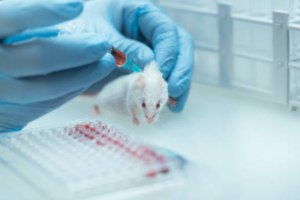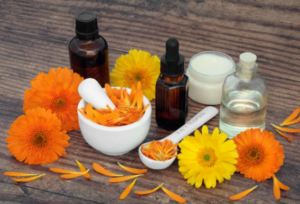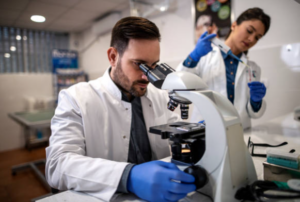Progress and Challenges

In the world of cosmetics, beauty is often synonymous with compassion. Yet, behind the allure of flawless makeup and radiant skincare lies an ethical dilemma that has long plagued the industry: animal testing. For decades, animals have been subjected to cruel and unnecessary tests to assess the safety and efficacy of cosmetic products.
However, as society becomes increasingly conscious of animal welfare and ethical consumption, the practice of animal testing is facing scrutiny like never before. In this comprehensive blog, we’ll delve into the ethical implications of animal testing in cosmetics, explore the progress that has been made towards cruelty-free alternatives, and discuss the challenges that still lie ahead.
The History of Animal Testing in Cosmetics
The history of animal testing in cosmetics is a sobering narrative that spans over a century, marked by scientific curiosity, regulatory loopholes, and ethical controversy. It finds its roots in the early 20th century when the cosmetics industry burgeoned with an array of new products flooding the market. With minimal regulations in place to ensure consumer safety, cosmetic manufacturers turned to animal testing as a means to assess the safety and efficacy of their products.
In these formative years, animals, predominantly rabbits, guinea pigs, mice, and rats, were subjected to a myriad of cruel and often painful tests. One of the most notorious procedures was the Draize test, developed in the 1940s, which involved applying cosmetic ingredients directly to the eyes or skin of restrained animals to evaluate irritation and toxicity levels. Additionally, lethal dose toxicity tests, wherein animals were force-fed large doses of cosmetic ingredients until they succumbed to illness or death, were commonplace.
Despite mounting concerns about the ethics and reliability of animal testing, the practice persisted largely unchallenged for decades. The lack of regulatory oversight allowed cosmetic manufacturers to conduct tests with minimal transparency and accountability, shielding them from public scrutiny.
As public awareness of animal welfare issues grew in the latter half of the 20th century, so too did opposition to animal testing in cosmetics. Animal rights activists, ethical organizations, and concerned consumers began to speak out against the cruelty inflicted upon animals in the name of beauty. High-profile campaigns and exposés shed light on the harsh realities of animal testing, prompting calls for reform within the cosmetics industry.
However, it wasn’t until the turn of the 21st century that significant strides were made towards addressing the ethical concerns surrounding animal testing in cosmetics. With mounting pressure from activists and consumers alike, governments and regulatory bodies began to take notice of the issue and enact legislative measures to curb animal testing.
In 2009, the European Union implemented a landmark ban on animal testing for cosmetics, effectively prohibiting the sale of any cosmetic products or ingredients that had been tested on animals. This groundbreaking legislation set a precedent for other countries and regions to follow suit, signaling a global shift towards cruelty-free beauty.
Despite these legislative victories, challenges remain in achieving a cruelty-free future for the cosmetics industry. The global nature of the industry presents logistical hurdles for enforcing cruelty-free standards across international supply chains. Additionally, the lack of regulatory harmonization between countries can create inconsistencies in animal testing requirements, undermining efforts to establish a uniform standard of cruelty-free beauty worldwide.
The widespread use of animal testing in cosmetics has sparked outrage among animal rights activists, consumers, and ethical organizations worldwide. The ethical concerns surrounding animal testing are multifaceted, encompassing issues of animal welfare, scientific validity, and human morality. Many argue that subjecting animals to unnecessary suffering for the sake of beauty is morally indefensible and ethically unjustifiable.

The Rise of Cruelty-Free Alternatives
The rise of cruelty-free alternatives in the cosmetics industry represents a pivotal moment in the ongoing battle against animal testing. As consumers become increasingly conscious of animal welfare issues and demand more ethical and sustainable products, brands are responding by offering cruelty-free alternatives to traditional cosmetics.
Cruelty-free brands, also known as ethical or compassionate brands, are those that refrain from testing their products on animals at any stage of development. These brands prioritize the use of alternative testing methods that do not involve animals, such as in vitro testing (using cells or tissues grown in a laboratory), computer modeling, and human volunteer studies. By embracing cruelty-free practices, these brands not only demonstrate their commitment to animal welfare but also cater to a growing segment of consumers who value ethical and sustainable products.
The surge in popularity of cruelty-free beauty can be attributed to several factors. Firstly, increased awareness and education about animal testing and its ethical implications have spurred consumer demand for cruelty-free alternatives. Social media platforms, in particular, have played a significant role in raising awareness and mobilizing support for cruelty-free initiatives, allowing consumers to connect with like-minded individuals and share information about ethical brands and products.
Secondly, advancements in technology and science have made alternative testing methods more accessible and reliable than ever before. In vitro testing, for example, allows researchers to evaluate the safety and efficacy of cosmetic ingredients using human cells or tissues, providing results that are often more accurate and relevant to human biology than animal tests. Similarly, computer modeling techniques use sophisticated algorithms to predict the potential effects of cosmetic ingredients on human health and safety, reducing the need for animal testing.
Thirdly, increased scrutiny and regulatory pressure have incentivized brands to adopt cruelty-free practices as a means of staying competitive in the market. With governments around the world implementing stricter regulations and bans on animal testing for cosmetics, brands that fail to embrace cruelty-free alternatives risk facing public backlash and regulatory penalties. By aligning themselves with cruelty-free values, brands can enhance their reputation, attract socially conscious consumers, and differentiate themselves in an increasingly crowded marketplace.
Today, the market for cruelty-free cosmetics continues to grow rapidly, driven by consumer demand for ethical and sustainable products. Cruelty-free brands can be found in a wide range of product categories, including skincare, makeup, haircare, and personal care. These brands often tout their cruelty-free status proudly, displaying certifications such as the Leaping Bunny logo or PETA’s Beauty Without Bunnies certification to reassure consumers of their commitment to animal welfare.
While the shift towards cruelty-free beauty is undoubtedly a step in the right direction, it is not without its challenges and limitations. Alternative testing methods, while promising, may still require further validation and refinement to ensure their accuracy and reliability. Moreover, the global nature of the cosmetics industry presents logistical challenges for enforcing cruelty-free standards across international supply chains. Additionally, the lack of regulatory harmonization between countries can create inconsistencies in animal testing requirements, hindering efforts to establish a uniform standard of cruelty-free beauty worldwide.

The Role of Consumer Education and Advocacy
The role of consumer education and advocacy in the movement towards cruelty-free beauty cannot be overstated. As awareness of animal testing issues grows, consumers are becoming increasingly empowered to make informed choices and drive positive change within the cosmetics industry. Through education, activism, and advocacy, consumers can play a crucial role in promoting ethical and sustainable beauty practices and pushing for an end to animal testing.
Consumer education is a fundamental pillar of the cruelty-free movement, empowering individuals with the knowledge and information they need to make ethical purchasing decisions. By educating themselves about the realities of animal testing, the ethical implications of cosmetic ingredients, and the availability of cruelty-free alternatives, consumers can make choices that align with their values and beliefs. This may involve researching brands and products, reading labels and ingredient lists, and staying informed about legislative developments and industry trends.
Social media platforms have become powerful tools for consumer education and advocacy, allowing individuals to connect with like-minded individuals, share information, and mobilize support for cruelty-free initiatives. Hashtags such as #CrueltyFree, #BeCrueltyFree, and #EndAnimalTesting have become rallying cries for activists and consumers alike, raising awareness and amplifying the voices of those advocating for change.
In addition to educating themselves, consumers can also take action to advocate for cruelty-free beauty practices and push for legislative reform. This may involve writing to policymakers, signing petitions, participating in protests and demonstrations, and supporting organizations and campaigns that work to end animal testing. By voicing their concerns and demanding accountability from brands and governments, consumers can drive meaningful change and hold the cosmetics industry accountable for its actions.

One of the most effective ways for consumers to support cruelty-free beauty is by voting with their wallets. By choosing to purchase cruelty-free cosmetics and supporting brands that prioritize animal welfare, consumers send a powerful message to the cosmetics industry that cruelty-free practices are not only desirable but also necessary for long-term success. This creates a market incentive for brands to adopt cruelty-free practices and invest in alternative testing methods, ultimately driving positive change within the industry.
In conclusion, the ethical dilemma of animal testing in cosmetics is a complex issue that requires careful consideration and decisive action. While progress has been made towards phasing out animal testing and promoting cruelty-free alternatives, challenges remain in achieving a truly cruelty-free beauty industry. By advocating for legislative reform, supporting cruelty-free brands, and making informed consumer choices, we can all play a part in creating a future where animals are no longer subjected to unnecessary suffering for the sake of beauty. Together, let us embrace a vision of beauty that is not only skin-deep but also compassionate and ethical.

